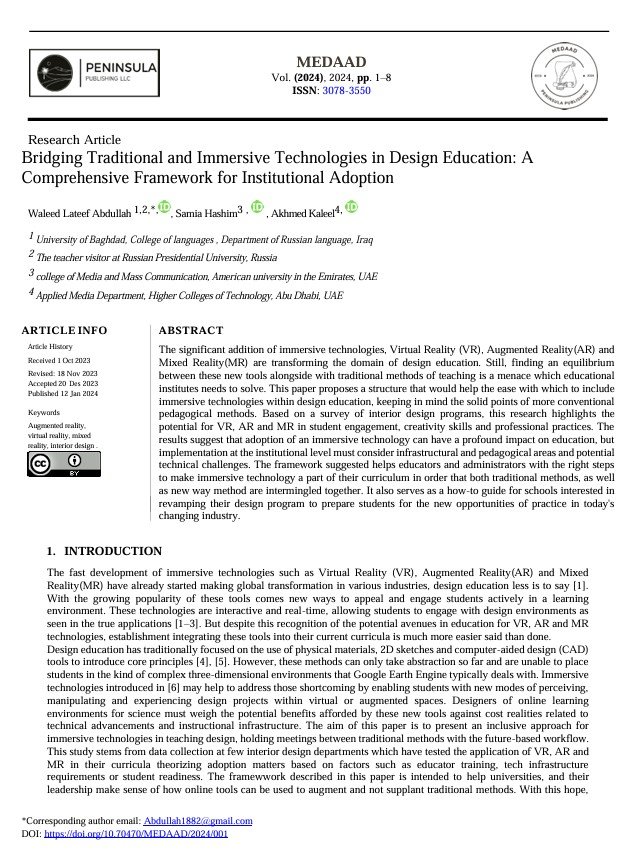Bridging Traditional and Immersive Technologies in Design Education: A Comprehensive Framework for Institutional Adoption
Main Article Content
Abstract
The significant addition of immersive technologies, Virtual Reality (VR), Augmented Reality(AR) and Mixed Reality(MR) are transforming the domain of design education. Still, finding an equilibrium between these new tools alongside with traditional methods of teaching is a menace which educational institutes needs to solve. This paper proposes a structure that would help the ease with which to include immersive technologies within design education, keeping in mind the solid points of more conventional pedagogical methods. Based on a survey of interior design programs, this research highlights the potential for VR, AR and MR in student engagement, creativity skills and professional practices. The results suggest that adoption of an immersive technology can have a profound impact on education, but implementation at the institutional level must consider infrastructural and pedagogical areas and potential technical challenges. The framework suggested helps educators and administrators with the right steps to make immersive technology a part of their curriculum in order that both traditional methods, as well as new way method are intermingled together. It also serves as a how-to guide for schools interested in revamping their design program to prepare students for the new opportunities of practice in today's changing industry.
Article Details

This work is licensed under a Creative Commons Attribution 4.0 International License.
